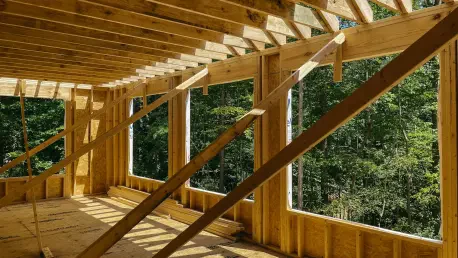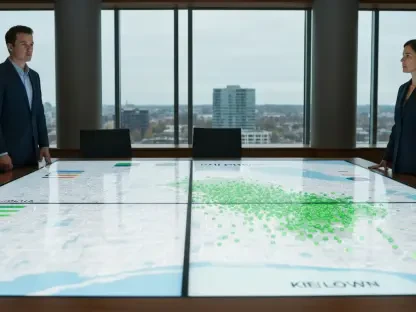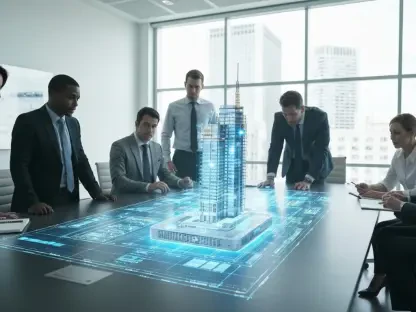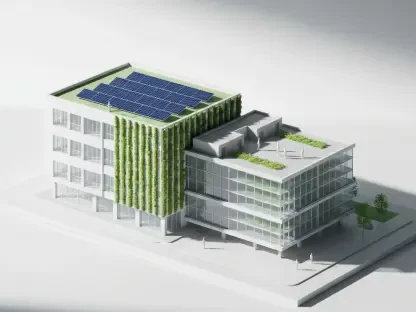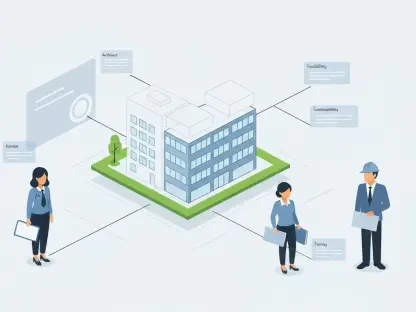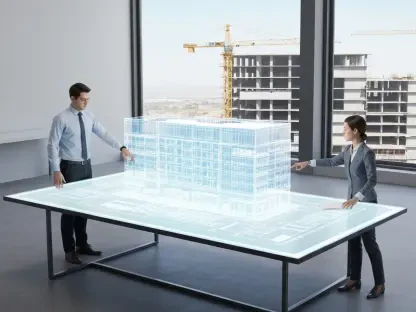The sustainable construction materials market has gained significant momentum recently, with remarkable growth anticipated in the next decade. Eco-friendly materials such as bamboo, cork, hempcrete, and precast concrete are at the forefront of this market, promising to revolutionize the construction industry’s approach to building projects. Increasing attention to global climate issues and environmental sustainability is driving the transformation of traditional practices. In 2024, the market was valued at USD 301.6 billion, with projections estimating it will reach an impressive USD 907.1 billion by 2034. This growth trajectory is fueled by regulatory frameworks aimed at reducing carbon emissions and energy consumption, along with curbing waste production. Developers and builders are responding to these regulations and capitalizing on financial incentives like tax breaks and subsidies to incorporate more sustainable materials into their projects.
The Rise of Sustainable Materials
Innovations for Environmentally Friendly Construction
Many builders today are increasingly looking towards sustainable materials to outfit their projects, driven by rising consumer awareness of climate change and the environmental impact associated with traditional construction techniques. New and advanced materials, along with smart building technologies, are being integrated into designs to enhance energy efficiency and reduce long-term maintenance costs. Bamboo, for instance, is emerging as a frontrunner in eco-friendly construction options. Known for its rapid growth and renewability, bamboo offers durability and versatility for structural applications. Its market value is expected to grow significantly, from USD 68.5 billion in 2024 to USD 214.3 billion by 2034. This demonstrates the increasing viability of bamboo and similar materials as replacements for conventional options that are more harmful to the environment.
An intriguing aspect of these emerging materials is how they leverage indirect distribution channels, including wholesalers and retailers, to facilitate broad access to sustainable resources. This approach ensures competitive pricing, making these materials more affordable and accessible to wider audiences. The ongoing transformation within the construction sector is bolstered not only by regulatory standards but also by a collective shift towards more conscious consumer choices. This shift is a testament to the evolving demands for sustainable options and underscores the potential for eco-friendly materials to become standard across various construction landscapes worldwide.
Regulatory Drivers and Financial Incentives
Legal mandates and economic benefits are pivotal factors encouraging industries to adopt sustainable materials and reduce environmental footprints. Governments worldwide are implementing meticulous measures to incentivize eco-friendly practices, fostering growth through environmentally conscious regulation. Builders who commit to adopting such sustainable methodologies often reap financial rewards, such as tax reductions, offering a compelling reason for their transition. Investment in sustainable infrastructure further supports growth, with entities looking forward to contributing to a less ecologically damaging future.
In the United States, awareness of environmental conservation has prompted policy interventions to align with green building standards. This involves certifications like LEED, enhancing adoption as consumers demand greater environmental responsibility. Factors such as strong policymaking and the public’s heightened environmental consciousness create a robust market for sustainable construction practices in the United States, shaping it as a leader in adopting greener alternatives. Between the current year and 2034, a notable growth rate of 10.8% is anticipated, driven by advancements in sustainable materials and methodologies. Investment in sustainable practices has, therefore, become vital to progress, reflecting a broader global trend intent on mitigating the adverse effects of construction on natural surroundings.
Global Shift Towards Sustainable Practices
The Impacts of Consumer Awareness
Consumer awareness and demand play an unprecedented role in driving the momentum for incorporating sustainable practices within the construction industry. As individuals become increasingly educated about the benefits of eco-friendly living, there is a growing push toward adopting materials that foster sustainable lifestyles. With ongoing urbanization pressures, consumers emphasize the importance of choosing construction materials that balance growth with environmental stewardship. The construction industry is responding by redesigning its approach to embrace these preferences, seeking innovative solutions that cater to energy-efficient and sustainable developments.
The shift in consumer expectations has ripple effects across production and design protocols. These newer, resource-efficient materials support increased sustainability, aligning with environmentally conscious narratives that dictate market trends. As businesses aim to meet urbanization demand, sustainable practices play an instrumental role in ensuring that modern developments do not come at the expense of planetary health. Developers are incentivized to explore unprecedented opportunities for growth, embracing a unified commitment to sustainability, which is now becoming more than a competitive advantage; it is an ethical imperative.
Uniting Technology with Eco-Friendly Strategies
The construction sector is experiencing a paradigm shift as it integrates advanced technologies with sustainable construction practices. The convergence of smart and eco-friendly solutions is evident in modern architectural projects increasingly focusing on energy-efficient designs. This advancement aims to decrease operational burdens and redefine the structural landscape with materials that carry lower carbon footprints. Renewable resources and technology have become essential elements for new builds, permeating construction philosophies worldwide.
Aligning technology with sustainable ideologies offers a pathway to innovation thriving within this burgeoning market. Advancements in materials science and building technologies open new avenues for crafting structures that fulfill aesthetic, functional, and ethical standards. As more companies recognize the value of green strategies, integrating such practices signifies a broader commitment to reducing the industry’s environmental impact and addressing the mounting challenges of climate change. By instituting measures that champion sustainability, the construction field is attuning itself to the needs and values of a society braced for change.
Future Prospects and Growth
Bridging Urbanization and Sustainability
A delicate balance exists between rapid urbanization and the need for sustainable development. Construction practices are adapting by embracing materials and strategies that fulfill urbanization goals without compromising ecological integrity. This approach acknowledges how urban expansion can cohabit sustainably with natural environments, a critical consideration as populations continue to grow and living spaces thereby demand increased resilience. Consequently, the sustainable materials market plays a pivotal role, aligning urban development with climate-conscious goals.
In urban environments, where the effects of construction are most pronounced, the shift to sustainable practices ensures that cities remain viable and livable spaces. Strategies emphasizing eco-friendly resources marry aesthetic appeal with functional excellence, providing the necessary criteria for directing future urban developments. The immense potential for green solutions in a densely populated world is becoming strikingly apparent, expressing a concerted desire to forge forward-facing, environmentally responsible urban centers that prioritize ecological balance and quality of life.
Navigating the Journey Toward Regulatory Alignment
Builders are increasingly drawn to sustainable materials for their projects, a shift largely driven by heightened consumer awareness regarding climate change and the ecological impact of conventional construction methods. Advances in materials and smart building technologies are now integrated into designs to boost energy efficiency and minimize upkeep costs. Bamboo is gaining popularity as a sustainable building material. Known for its fast growth and renewability, bamboo offers strong and adaptable options for structural uses. Its market value is anticipated to jump from USD 68.5 billion in 2024 to USD 214.3 billion by 2034, underscoring its potential as a viable substitute for traditional, more environmentally damaging materials. A fascinating feature of these new materials is their use of indirect distribution channels, including wholesalers and retailers, to widen access and ensure affordability. The transformation in construction practices is driven by both regulatory standards and consumer demand for eco-friendly options, highlighting the future of sustainable materials in construction globally.
